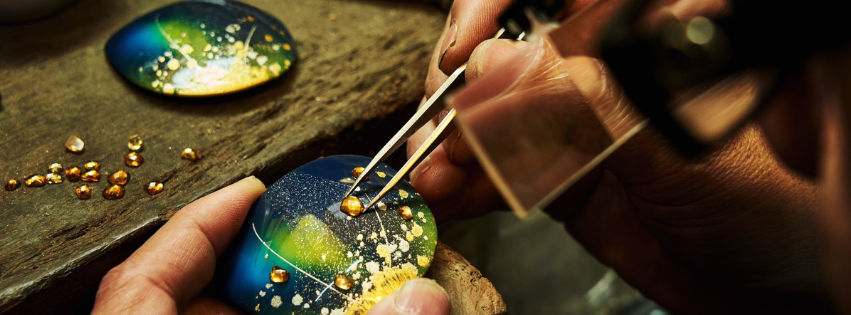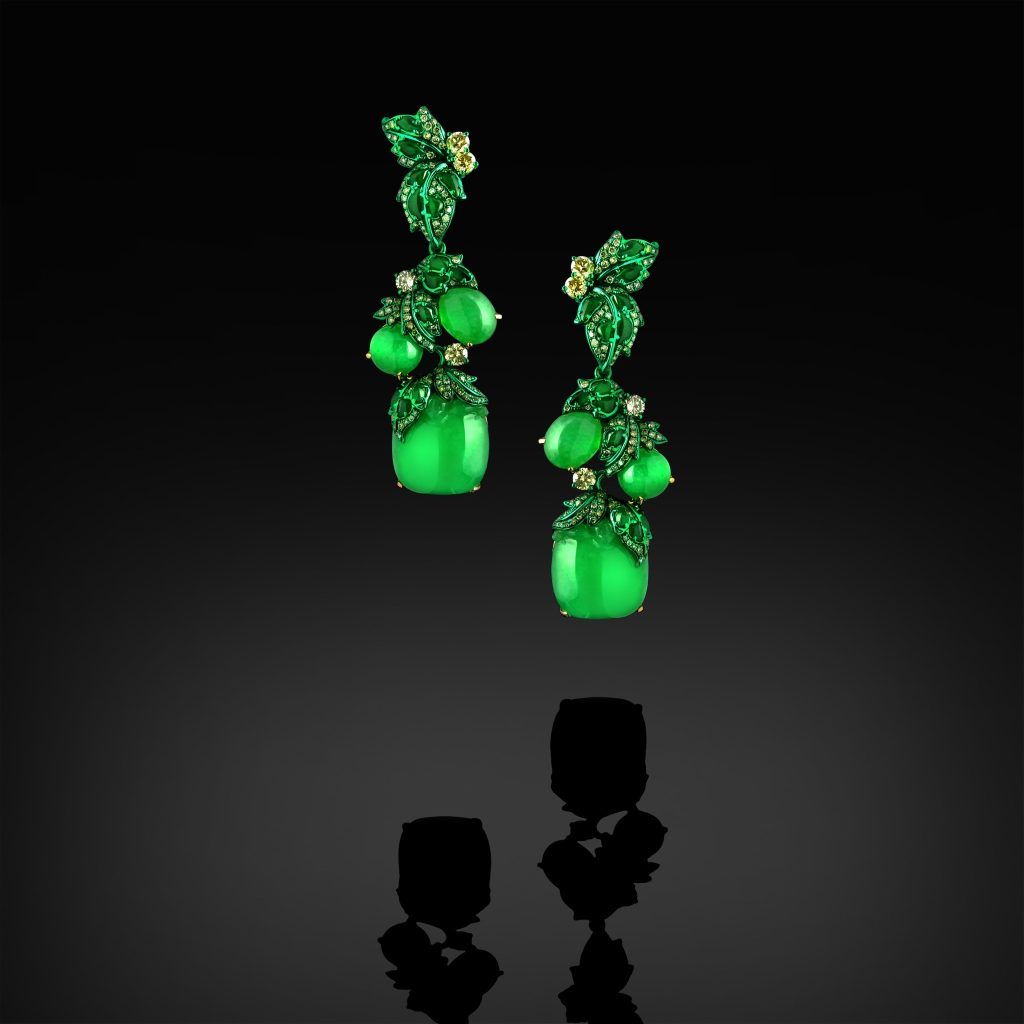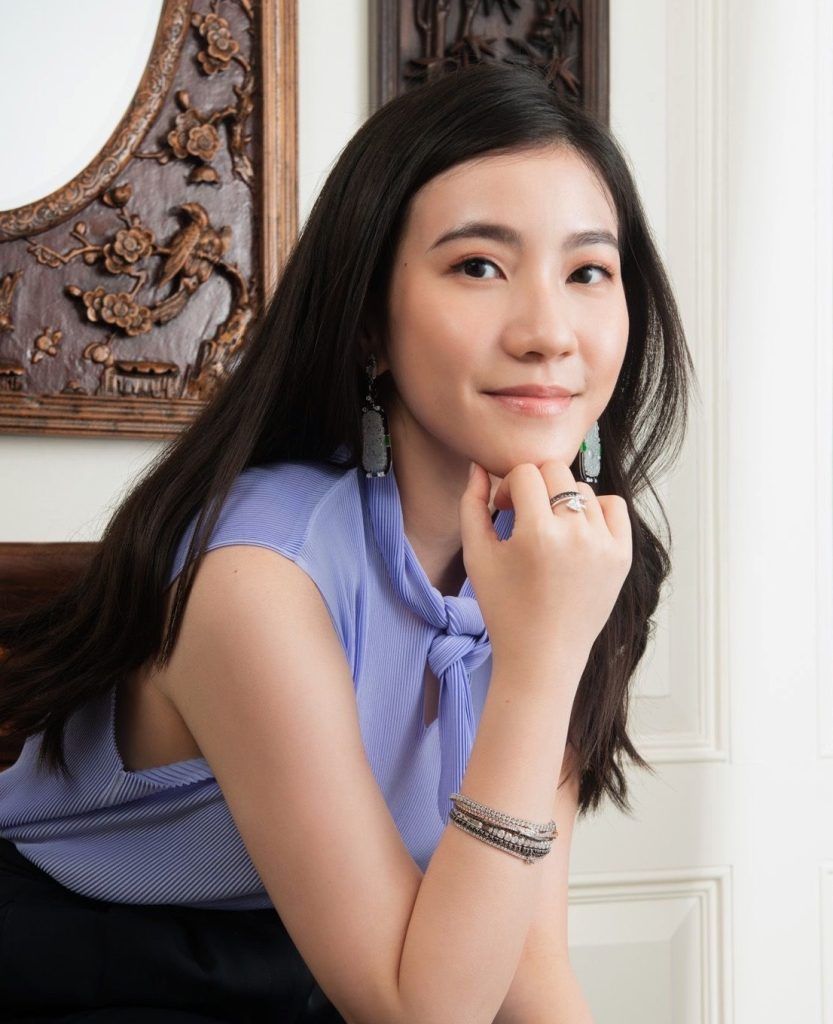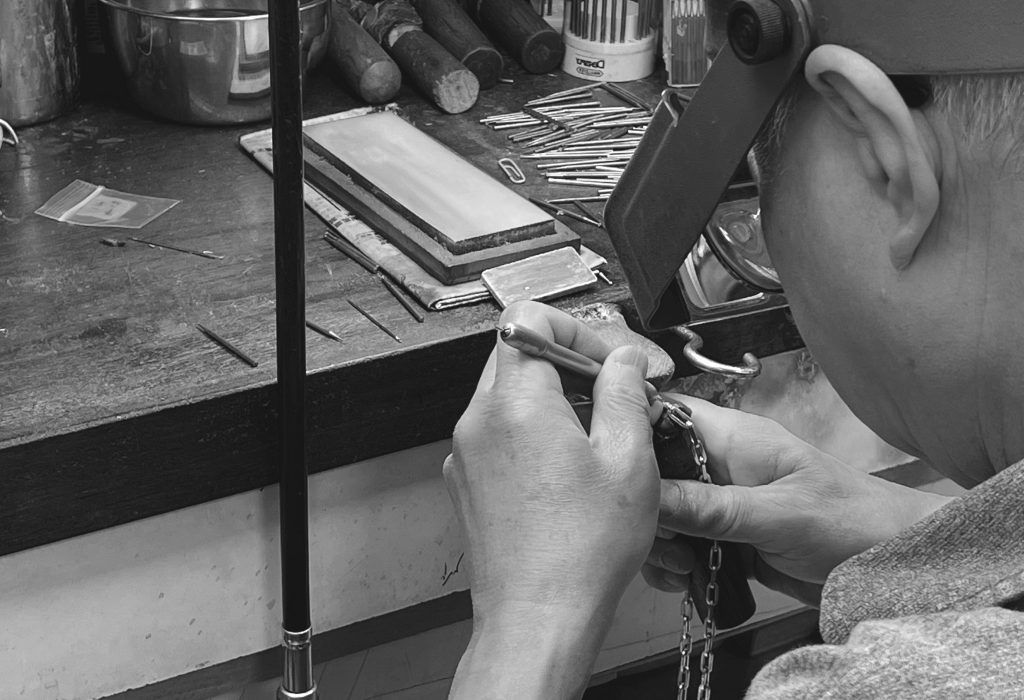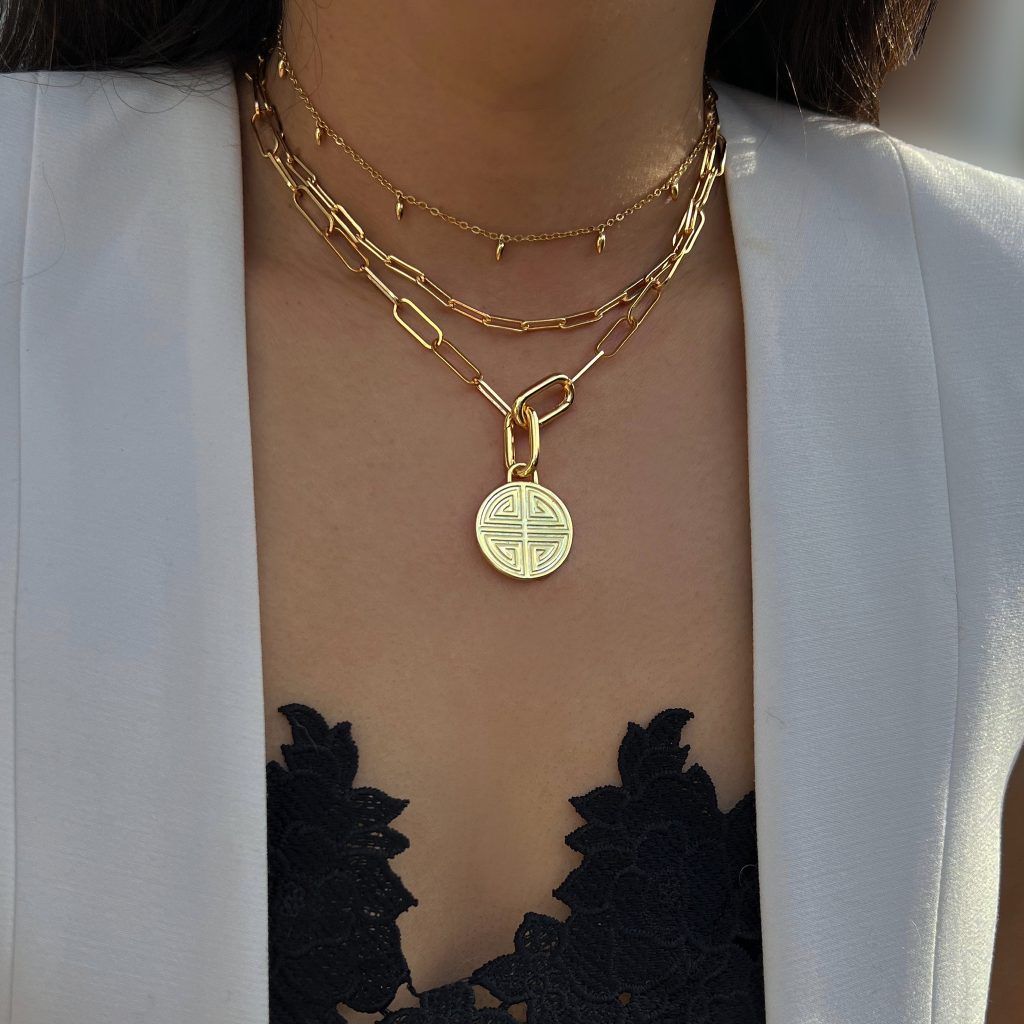The demand for luxury homegrown Asian designers in fine jewellery has been on the rise, reflecting the deep cultural significance of such adornments in the region. With an increasing number of local brands emerging to cater to this demand, Asia is witnessing a notable shift towards supporting and embracing its own designers.
An article featured on Jing Daily highlights that approximately 30 percent of the world’s fine jewellery is now crafted in and around Panyu, located in Guangdong, China. This area boasts a concentration of 16,000 jewellery manufacturers and trading companies, as noted by Chinese jewellery artist Aso Leon. In the face of stiff competition from well-established Western counterparts and the proliferation of boutique offerings, the question arises: What does it take for Asian designers to distinguish themselves in this competitive landscape?
Let’s delve deeper into the factors that contribute to the success of homegrown talent in the Asian luxury fine jewellery market.
The demand for distinctive design
In the world of fine jewellery, there has been a notable transformation in Asia, marked by a surge in demand for products from locally nurtured brands. Sonia Hou, the founder of Asian-owned brand Sonia Hou Jewelry, which features in the movie Joy Ride, sheds light on the inspiration behind her brand, stating, “In college, I always had trouble finding stylish, reasonably priced jewellery that was safe on my skin and long-lasting.” This struggle propelled her to establish a brand in 2012 that focuses on demi-fine jewellery, blending quality materials with fashion-forward designs at affordable prices.
This demand for homegrown brands is further emphasised by George Inaki Root, CEO and Creative Director of Milamore in the US, who notes, “My clients seek unique pieces that transcend traditional jewellery, particularly drawn to our Kintsugi collection because its concept of beauty in imperfection resonates universally.” The uniqueness and cultural significance embedded in Asian designs are becoming increasingly appealing to consumers. “I aimed to establish a brand that honours the finest aspects of Japan. My designs are primarily inspired by Japanese heritage, craftsmanship, and philosophy,” adds Root.
Bertrand Mak, founder of Hong Kong-born Sauvereign, emphasises the importance of creating lasting value. He shares, “There is a mutual aspiration that drives every entrepreneurship – a desire to create something that is currently missing in the world.” Sauvereign stands out with its transformative sculptural ornaments and proprietary gold leafing application, embodying a commitment to enduring craftsmanship and distinctive design.
Adding to this chorus of innovation, Hong Kong’s Austy Lee, director of Austy Lee Art Jewellery, sheds light on the creative spirit. “Having worked as a designer for many others in my previous career, I realised that there were always limitations and boundaries to the designs that I wanted them to be. I have always wanted to develop my jewellery brand so that I can create any pieces that I want – unique, colourful, fun, wearable art pieces, bringing people a new perspective towards high jewellery.” Lee adds, “I would say that Asian customers are more interested in the value of the design.”

As the demand for homegrown Asian jewellery brands intensifies, the industry is witnessing not only a shift in consumer preferences but also a celebration of cultural heritage. These brands, rooted in personal narratives and inspired by diverse cultural elements, are redefining the traditional boundaries of luxury.
In the words of George Inaki Root, it’s about honouring the “finest aspects” and crafting pieces that resonate universally, marking a luminous ascent for homegrown brands in the Asian jewellery realm.
Standing out in a sea of competitors
In the face of established Western competitors and a growing number of boutique offerings, the question arises: What does it take for Asian designers to stand out?
Sauvereign’s Bertrand Mak believes that differentiation lies in offering something that is not transitory. He shares, “More and more I find myself wanting to create something that isn’t transitory, that could be passed on from one generation to the next.”
Sonia Hou further emphasises SONIA HOU Jewelry’s distinction, stating, “We are known for our timeless chic designs, and modern Asian-inspired pieces.” The brand goes beyond cultural inclusivity, aiming to celebrate various cultures worldwide.
This commitment to cultural diversity is echoed by Pearl Li, the head of brand development at the House of Dilys’, who emphasises the brand’s roots in Hong Kong’s rich heritage of jewellery artistry. “By establishing our brand in this region, we aim to promote and celebrate the exceptional expertise of Hong Kong’s artisans, ensuring that their traditional craftsmanship continues to flourish,” says Li.
Nina Pahlman, founder of Karma Links, adds a unique perspective to the narrative, stating, “The Karma Links jewellery line blends the clean lines and timeless design of Nordic minimalism with the vibrant energy of East Asia, resulting in harmonious styles with a modern twist.” This fusion of aesthetics positions Karma Links as a bridge between two distinct design philosophies, catering to a diverse audience with varied preferences.
Avec Info’s Kate J. Lee and Chloe J. Lee share insights into the dynamics of the jewellery market, “Today, Asian customers seek jewellery brands that offer wearability and versatility in their designs.” This underlines the evolving preferences of Asian consumers and the importance of adaptability for brands striving to stand out.
“While Western jewellery often embraces bold and conceptual designs, conveying a strong and distinctive aesthetic, Asian jewellery tends to focus on intricate detailing and delicacy,” says Avec Info’s Kate and Chloe Lee. “The craftsmanship in Asian jewellery often reflects a meticulous and refined approach, creating pieces that exude a sense of sophistication. Both styles contribute uniquely to the global jewellery market, each showcasing its cultural influences and design philosophies.”
Understanding the Asian customer
Asian customers play a pivotal role in driving the demand for these homegrown brands. Sonia Hou highlights the preferences of Asian customers, stating, “Asian customers appreciate our unique Asian-inspired modern designs – as they are stylish and one-of-a-kind.” The demand is not solely based on aesthetics but also on the high-quality materials used by these brands. Hou adds, “They also appreciate the high-quality materials we use – which is mostly 18K gold and sterling silver – and the affordability element of our products.”
Li from House of Dilys’ adds, “They desire pieces that can effortlessly transition from day to night, complement various outfits and occasions, and become an integral part of their personal style.”
These diverse perspectives converge to paint a comprehensive picture of the Asian consumer’s expectations – a desire for uniqueness, high-quality materials, versatility, and intrinsic value that transcends mere adornment. The trajectory of homegrown brands aligns seamlessly with these aspirations, solidifying their position as the preferred choice among the discerning Asian clientele.
The growing recognition for Asian-owned brands
The recognition for Asian-owned boutique jewellery brands has been steadily growing. “The rise of the #StopAsianHate movement during the pandemic shed more light on AAPI-owned brands in the U.S., including ours,” observes Sonia Hou, emphasising the impact of social movements on elevating the visibility of Asian-owned boutique jewellery brands.
This acknowledgment extends beyond societal shifts, finding resonance in the broader global fascination with Asian culture.
Li affirms, “From our observations, there has indeed been a noticeable growth in recognition for Asian-owned boutique jewellery brands, albeit a gradual one.” These brands, rooted in authenticity and driven by a commitment to craftsmanship, are redefining industry norms. As Li points out, they bring “creativity and diversity, adding a fresh perspective to the market.” This fresh perspective challenges traditional norms and resonates with a discerning, value-conscious consumer base seeking more than just adornment in their jewellery. The ascent of homegrown Asian jewellery brands signifies more than a market trend; it reflects a cultural resurgence in fine craftsmanship.
The influence of cultural elements on design
One of the distinctive features that set homegrown Asian jewellery brands apart is the profound influence of cultural elements on their designs. In the words of Austy Lee, director of Austy Lee Art Jewellery, “Born and raised in Hong Kong, immersed in a culturally diverse society as well as deeply influenced with traditional Chinese virtues by my family, I want my jewellery collections to represent my daily life, the environment I live in, and my beloved city – Hong Kong.” This sentiment echoes across many brands, where cultural heritage becomes a wellspring of inspiration, shaping the aesthetics and narratives of their creations.
George Inaki Root from Milamore, shares a similar feeling regarding the influence of Japanese culture on his brand. “Being ‘Handcrafted in Japan’ already sets me apart in the jewellery world, as it’s quite uncommon. Additionally, the incorporation of the beautiful philosophy and culture of Kintsugi into my designs further distinguishes my work.” This fusion of traditional craftsmanship and contemporary design not only adds depth to the brand’s identity but also resonates with consumers seeking unique and culturally enriched pieces.
Sustainability in Asian jewellery
In recent years, there has been a noticeable shift towards sustainability in the global jewellery industry. Asian homegrown brands are not exempt from this trend, as they increasingly recognise the importance of ethical practices and environmental responsibility.
Pearl Li from House of Dilys’, emphasises the role of homegrown brands in introducing the concept of slow jewellery to Asian markets. “As consumers become more conscious of their purchases, there is a growing interest in investing in pieces that are meaningful, timeless, and ethically crafted.” This commitment to sustainability not only aligns with global trends but also reflects the brands’ dedication to responsible business practices. Nina Pahlman, founder of Karma Links, further adds, “I think the popularity of a brand depends on its designs, skilled craftsmanship, core values, marketing efforts, and collaborations, regardless of the ethnicity of the owner.” This indicates a broader industry shift towards recognising and appreciating brands based on their ethical considerations, transparency, and commitment to sustainable practices.
Challenges and opportunities for homegrown brands
While there is a growing recognition for Asian-owned boutique jewellery brands, they also face unique challenges and opportunities. Bertrand Mak, founder of Sauvereign, sheds light on the challenges independents encounter, “The mega brands have become incredibly powerful and are infiltrating every nook and cranny of the market. As daunting as it is, there are still opportunities for independents as collectors continue to acquire more knowledge and sophistication.” This dichotomy between established giants and emerging independents creates a dynamic landscape where brands must navigate to establish their presence. The challenges are met with innovative solutions, such as direct-to-consumer models, word-of-mouth marketing, and a focus on unique value propositions.
Looking to the future
As these homegrown Asian jewellery brands continue to carve their niche in the market, expansion and global recognition become pivotal aspirations. Sonia Hou expresses her global ambitions, stating, “Always looking to expand worldwide, including Asia (of course!). As a proud Chinese American, it would be a dream to grow a customer base in Asia, as it is the root of who I am and where I’m from – it is the main inspiration behind my Asian-themed designs!”
The global fascination with Asian culture, coupled with the unique narratives and craftsmanship offered by these brands, positions them for international success. Austy Lee highlights, “East-meets-West aesthetics have been growing for both jewellers and consumers due to cultural affinity. More people are looking for jewelleries with the essence of the East, and Asian jewellers could achieve that more appropriately because such an aesthetic is innate and instilled by the surrounding environment, family, and social culture since childhood.”
The journey of homegrown Asian jewellery brands encompasses a rich tapestry of cultural influences, sustainability initiatives, industry challenges, and global aspirations. As these brands continue to redefine the narrative of luxury, they not only contribute to the reshaping of the jewellery industry but also represent a cultural resurgence in fine craftsmanship. The recognition they gain is not just a reflection of market trends but a testament to their resilience, creativity, and ability to capture the hearts of a global audience.
“We are excited to witness and be part of a new wave of designers and brands that are reshaping the traditional jewellery scene. Asian-owned boutique jewellery brands offer unique narratives, cultural influences, and craftsmanship that resonate with customers who seek something beyond the mainstream. As consumers become more discerning and value-conscious, they appreciate the authenticity and individuality that Asian-owned independent jewellery brands bring to the table. These brands are redefining the industry norms and creating a space where diversity and creativity thrive,” says House of Dilys’ Li.

